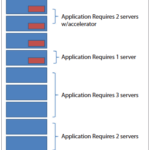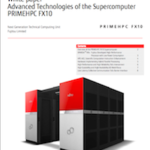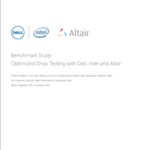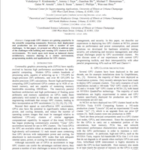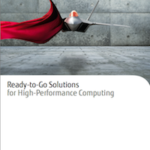This is the final entry in a insideHPC series of features that explores new resource management solutions for workload convergence, such as Bright Cluster Manager by Bright Computing. This article highlights how resource management systems that can manage clusters on-premises or in the cloud greatly simplify cluster management. That way, different tools do not have to be learned for managing a cluster based on whether it is located in the company data center or in the cloud.
HPC System Management: Scheduling to Optimize Infrastructure
Whether the application is floating-point intensive, integer based, uses a lot of memory, has significant I/O requirements, or its widespread use is limited by purchased licenses, a system that assigns the right job to the right server is key to maximizing the computing infrastructure. We continue our insideHPC series of features exploring new resource management solutions for workload convergence, such as Bright Cluster Manager by Bright Computing. This article discusses how scheduling can work to optimize infrastructure and improve HPC system management.
The 3 Types of Cloud Computing for HPC Systems Management
Three types of clouds have been developed: public clouds, private clouds and hybrid clouds. We continue our insideHPC series of features exploring new resource management solutions for workload convergence, such as Bright Cluster Manager by Bright Computing. This article explores the three types of cloud computing, as well as how cloud computing can work to reduce CAPEX.
Clusters & Cloud Computing: Speeding up HPC Systems Management
We continue our insideHPC series of features exploring new resource management solutions for workload convergence, such as Bright Cluster Manager by Bright Computing. This article focuses on how clustering servers and utilizing cloud computing can help your enterprise achieve more flexibility and speed — as well as improve HPC systems management.
Successfully Managing Workload Convergence in Your Data Center
Modern enterprises are being challenged to implement new technologies and produce results faster without increasing their IT budgets. This is the first a series of features exploring new resource management solutions for workload convergence, such as Bright Cluster Manager by Bright Computing.
PRIMEHPC FX10 Fujitsu Supercomputer
Fujitsu developed the first Japanese supercomputer in 1977. In the thirty-plus years since then, we have been leading the development of supercomputers with the application of advanced technologies. We now introduce the PRIMEHPC FX10, a state-of-the-art supercomputer that makes the petascale computing achieved by the “K computer”(*1) more accessible.
Drop Testing with Dell, Intel and Altair
Impact analysis or drop testing is one of the most important stages of product design and development, and software that can simulate this testing accurately yields dramatic cost and time-to-market benefits for manufacturers. Dell, Intel and Altair have collaborated to analyze a virtual drop test solution with integrated simulation and optimization analysis, delivering proven gains in speed and accuracy. With this solution, engineers can explore more design alternatives
GPU Clusters for High-Performance Computing
Large-scale GPU clusters are gaining popularity in the scientific computing community. However, their deployment and production use are associated with a number of new challenges. In this paper, we present our efforts to address some of the challenges with building and running GPU clusters in HPC environments. We touch upon such issues as balanced cluster […]
Component Architecture for Scientific HPC
The Common Component Architecture (CCA) provides a means for software developers to manage the complexity of large-scale scientific simulations and to move toward a plug-and-play environment for high-performance com- puting. In the scientific computing context, component models also promote collaboration using independently developed software, thereby allowing particular individu- als or groups to focus on the aspects of greatest interest to them. The CCA supports parallel and distributed computing as well as local high-performance connections between components in a language-independent manner. The design places minimal requirements on components
High Performance Computing from Fujitsu
The developments that have taken place in high performance computing (HPC) over the decades can be described quite simply: Without Fujitsu research, the development of the supercomputer would have been quite different.


